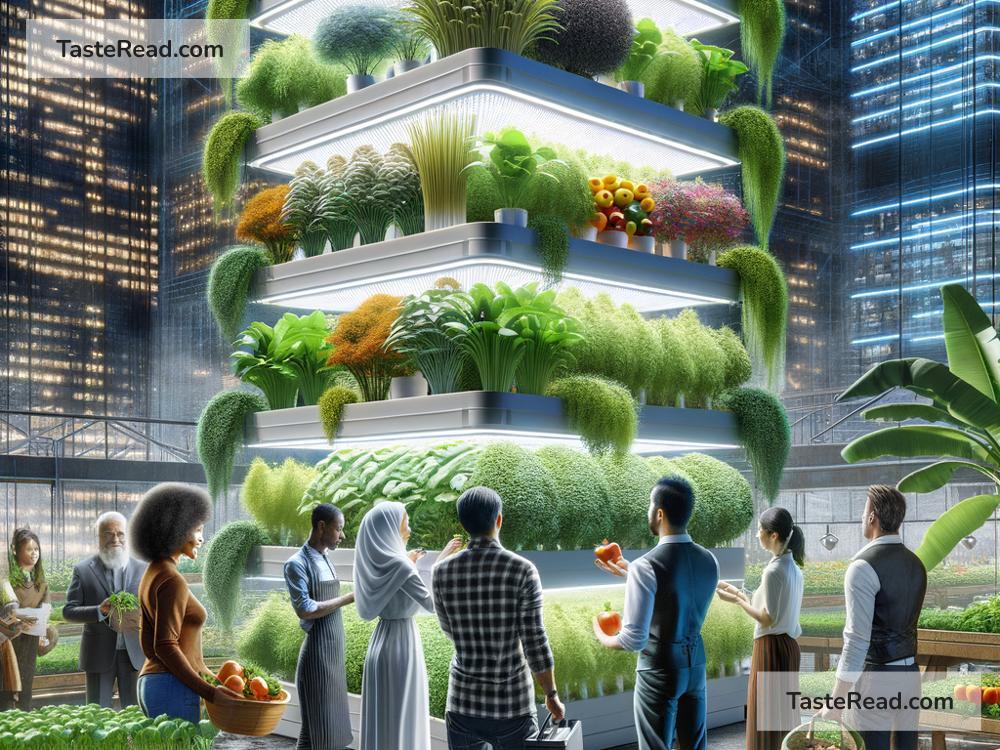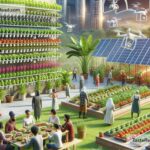The Future of Food and Regenerative Agriculture: A Healthier Planet, Healthier People
What will food look like in the future? How will we grow it sustainably, while protecting the Earth and feeding ever-growing populations? These are big questions, and the answers lie in something exciting and hopeful: regenerative agriculture.
Regenerative agriculture is a way of farming that looks after the land, the environment, and the people who depend on it. It’s not just about growing food; it’s about making sure farming helps the planet heal. Many experts believe that regenerative agriculture will play a key role in the future of food production. Here’s why—and how it could change the way we grow and eat food.
Why Current Farming Systems Are Unsustainable
The food system today is facing major problems. Modern farming often damages the planet. Over the years, practices like plowing, heavy chemical use, and monocropping (growing the same crop repeatedly on the same land) have harmed the soil. Healthy soil is the foundation of life—it filters water, stores carbon, and grows nutritious food. But much of the Earth’s soil has been degraded, meaning it’s less able to do these important jobs.
Industrial farming also uses a lot of resources, like water and energy, while contributing to pollution. Fertilizers and pesticides can run off into rivers, killing fish and polluting drinking water. Plus, farming releases a lot of greenhouse gases, like carbon dioxide and methane, making climate change worse.
At the same time, millions of people don’t have enough to eat, while others consume food that is highly processed and unhealthy. Clearly, the food system is broken. This is where regenerative agriculture comes in.
What Is Regenerative Agriculture?
Regenerative agriculture is like giving the Earth a makeover, turning damaged land back into healthy, productive farmland. It’s not just “sustainable agriculture,” which aims to maintain the current state of the land. Regenerative agriculture goes further—it actively repairs and improves the soil, water, and ecosystems.
The idea is simple: when farming works with nature (instead of fighting it), the land becomes more fertile, resilient, and productive over time. Regenerative practices focus on keeping soil healthy, boosting biodiversity (the variety of plants and animals in a given area), and reducing harmful environmental impacts.
Some key methods used in regenerative agriculture include:
– Cover Crops: Farmers grow plants like clover or rye between main crops to protect the soil and keep it fertile.
– No-Till Farming: Instead of plowing the soil, farmers leave it undisturbed to protect its structure and lessen erosion.
– Crop Rotation: Switching crops each season helps control pests and diseases while improving soil health.
– Agroforestry: Mixing trees with crops or livestock creates healthier ecosystems and better yields.
– Composting: Organic matter is recycled back into the soil, making it richer.
Regenerative agriculture works to restore nature, reduce carbon emissions, and make food production healthier—both for the planet and the people who eat it.
Why Regenerative Farming Is the Future of Food
There are many reasons why regenerative agriculture is gaining attention. Here’s how it could shape the future of food:
-
Fighting Climate Change
Regenerative farming can pull carbon dioxide out of the atmosphere and store it in the soil. This process, called carbon sequestration, helps slow down global warming. By taking better care of the soil, regenerative agriculture reduces greenhouse gas emissions and builds resilience against climate change impacts like droughts and floods. -
Healthier Food
When crops grow in rich, healthy soil, they are packed with nutrients. That means the food produced through regenerative systems can be more nutritious than food grown in poor soil. Future generations may benefit from diets that are both healthier and tastier. -
Thriving Ecosystems
Regenerative practices encourage biodiversity. The presence of a wide variety of plants, insects, and animals helps balance ecosystems and reduces the need for chemical fertilizers or pesticides. Pollinators like bees, which are vital for growing fruits and vegetables, also benefit from healthier environments. -
Economic Benefits for Farmers
Farmers can save money by using fewer fertilizers and chemicals. Healthier soil also leads to better crop yields over time, creating a more stable income. Regenerative farming helps farmers adapt to extreme weather and reduces their dependence on expensive farming tools. -
Feeding More People
Regenerative agriculture focuses on long-term growth. Instead of depleting soil and resources, it ensures farmland stays productive for decades. This is crucial as the world’s population grows and millions of new mouths need to be fed.
The Role of Technology and Innovation
Technology will play an important role in expanding regenerative agriculture. Innovations like precision farming (using data and sensors to manage crops), drones for planting cover crops, and artificial intelligence-driven weather predictions can help farmers adopt regenerative methods more efficiently. As technology improves, regenerative farming will likely become more accessible and scalable.
How You Can Support Regenerative Agriculture
You don’t have to be a farmer to help promote regenerative agriculture. Here are a few simple actions you can take:
– Buy from local farms that use sustainable and regenerative methods.
– Choose organic products, as they often follow some regenerative principles.
– Learn about food systems and share what you know with others.
– Raise your voice for policies that support regenerative farming practices.
A Recipe for Hope
Regenerative agriculture offers hope in the face of many challenges. It’s a way to grow food that gives back to the planet rather than taking from it. This vision of the future is one where farming helps heal the Earth, communities thrive, and everyone has access to healthy, sustainable food.
As consumers, farmers, policymakers, and scientists work together, the future of food can be one of abundance—and regeneration. Let’s embrace farming practices that protect our planet and nourish future generations. After all, a healthier planet means healthier people, too.


